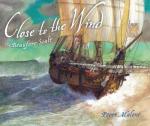|
This section contains 302 words (approx. 2 pages at 300 words per page) |
In 1805, to standardize nautical observations, Sir Francis Beaufort, an Irish hydrographer and member of the British Admiralty, created a scale for judging the strength of wind at sea. His scale is still a useful standard for the determination of wind force.
Each of the Beaufort Scale's 12 wind-force levels, ranging from calm to hurricane force, includes a description of the effect of the wind on readily observable, common objects. Beaufort's original purpose in devising the scale was to create a common reference for sailors to estimate and easily convey the effect of wind and sea upon their ships. Thus, the scale gives observers a means of estimating wind force.
The Beaufort Wind Scale numbers correspond to the following states (with estimated wind speeds in knots): Beaufort No.0 calm (less than 1 knot of wind); Beaufort No.1 light air (1-3 knot wind); Beaufort No.2 light breeze (4-6 knot wind); Beaufort No.3 gentle breeze (7-10 knot wind); Beaufort No.4 moderate breeze (11-16 knot wind); Beaufort No.5 fresh breeze (17-21 knot wind); Beaufort No.6 strong breeze (22-27 knot wind); Beaufort No.7 near gale (28-33 knot wind); Beaufort No.8 gale (34-40 knot wind); Beaufort No.9 strong gale (41-47 knot wind); Beaufort No.10 storm breeze (48-55 knot wind); Beaufort No.11 violent storm breeze (56-63 knot wind); Beaufort No.12 hurricane (64 or greater knot wind).
Originally limited to a description of the effects of wind on a sailing vessel's canvas (force 12, for instance, was "that which no canvas could withstand"), the scale was revised in 1939 by the International Meteorological Committee to include the effect of wind on land features. The numbers from the Beaufort scale were used on weather maps until 1955, when a system of wind feathers, which show wind direction and intensity, was adopted.
See Also
Air Masses and Fronts; Weather Forcasting; Weather Forecasting Methods
|
This section contains 302 words (approx. 2 pages at 300 words per page) |


